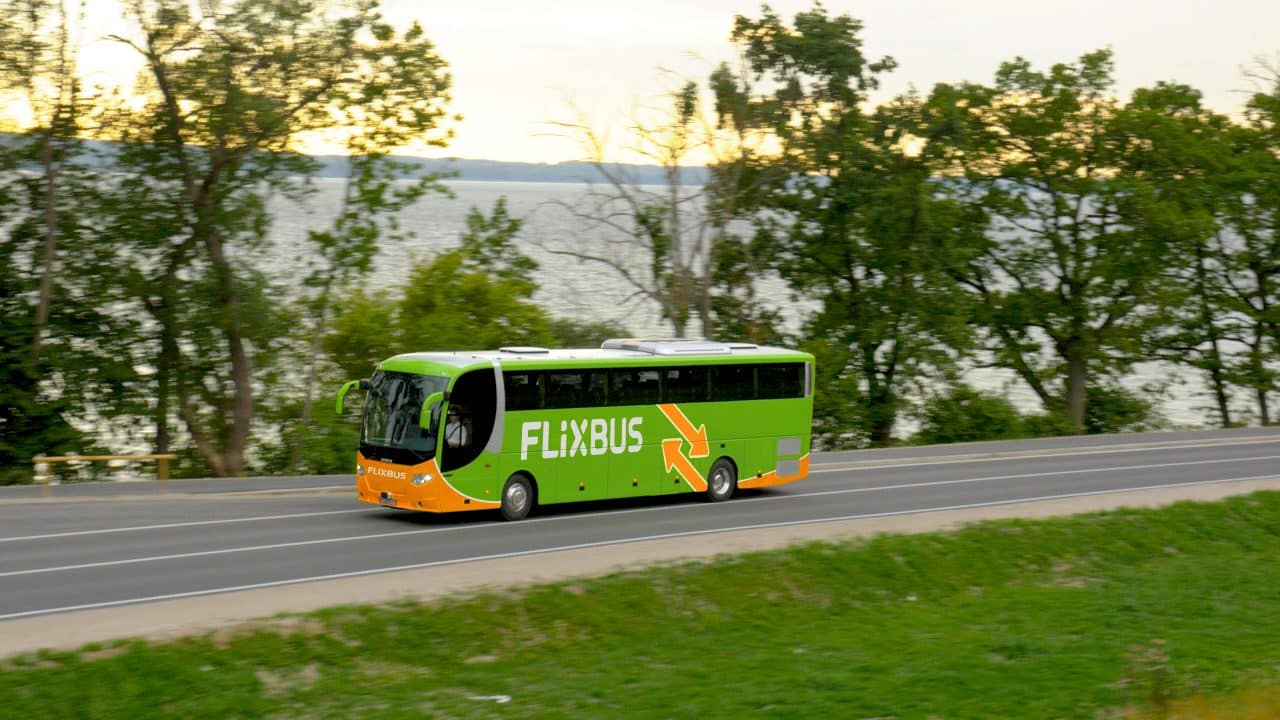
In the future, the FlixBus buses will not only get to show off their green finery, they will also run “green”. In addition to its three e-buses, Europe’s largest long-distance bus provider also wants to rely on hydrogen fuel and test fuel cell-powered buses on long-distance bus routes. FlixMobilty is already in initial talks with Freudenberg Sealing Technologies for this reason.
Long-distance buses are already regarded as one of the most eco-friendly ways of traveling due to their high degree of utilization. Now, FlixMobility wants to take the next step and reduce its environmental impact even further in the not too distant future. “We want to help shape the future of mobility. The modern FlixBus fleet is already extremely eco-friendly,” says Fabian Stenger, Managing Director of FlixBus DACH. “Those who travel by long-distance bus are already saving 80% of CO2 emissions compared to those driving a passenger car. Nevertheless, we are constantly asking ourselves how we can make travel even more sustainable. After three successfully launched electric long-distance buses, together with Freudenberg we now want to develop the first long-distance bus with a hydrogen fuel cell drive and set down another milestone in the history of mobility.”
Opportunity for Europe
The first electric buses from Chinese manufacturers BYD and Yutong have been cruising along on German and French roads for some time now. Two German companies FlixMobility (based in Munich) and Freudenberg Sealing Technologies (from Weinheim) now want to give European bus manufacturers in particular a chance an opportunity to have an impact on the mobility transition through their use of fuel cell technology. “The first talks with bus manufacturers are already underway for this forward-looking project,” those from Munich say. The two companies are seeking public funding from the National Innovation Program for Hydrogen and Fuel Cell Technology (NIP). “The aim is to ensure that this technology reaches market maturity more quickly and thereby significantly contribute to the reduction of CO2 emissions from road traffic.”
This despite the poorer CO2 balance of hydrogen compared to battery-powered vehicle. After all, the production of hydrogen requires a great deal of electricity. FlixMobility intends to rely on both technologies in the future. “At the moment, we are in the pilot phase with our electric buses and the planned hydrogen buses and actively in talks with manufacturers and technology partners. We are not focusing on one technology, but are a bit non-committal here – we’re open to all environmentally friendly drive system alternatives,” Nina Göbbels from FlixBus explains.

However, there are several reasons that make hydrogen more appealing, especially when it comes to long-distance transport. “In addition to the amount of weight saved, there’s the shorter charging time. Like nowadays, refuelling itself should take a maximum of 20 minutes, except in this case hydrogen flows into the tank instead of diesel. Another argument in favor of fuel cell technology is its capability of converting electricity from renewable energies directly into hydrogen at the point of production.”
100% performance
In terms of performance, the hydrogen bus should be on a par with its diesel-powered counterparts and also be able to cover 500 kilometers without refueling. “A hybrid system that intelligently combines battery and fuel cells is especially practical for heavier vehicles that cover long distances since full electric drives still currently have a short range,” says Claus Möhlenkamp, CEO of Freudenberg Sealing Technologies. “Initially, a demonstration bus fleet is to be equipped with the system during the validation phase. In the future, we intend to make a significant contribution towards reducing CO2 emissions from road traffic.”
Hydrogen refueling stations are still very rare. We are still a long way away from a regional network and the construction of a hydrogen refueling station costs far more than a traditional filling station, around one million euros according to estimates. Currently, there are only 74 hydrogen refueling stations in Germany, and things are even worse for our European neighbors. So how will the buses be refueled?
“For the pilot project we can adapt the use of the fuel cell FlexBuses to the infrastructure,” says Nina Göbbels. “Countries like Germany already have a relatively good infrastructure. We are currently examining several connections within Europe for an appropriate infrastructure in terms of hydrogen supply and the maintenance competencies of manufacturers. One of the buses will also be on the road in Germany.”
However, it will take a few more years before the first battery-fuel-cell-hybrid bus goes on tour. “That depends on the ongoing discussions and their development with the manufacturers; at the earliest from 2021 onwards.”
Here you can find more articles on mobility.

